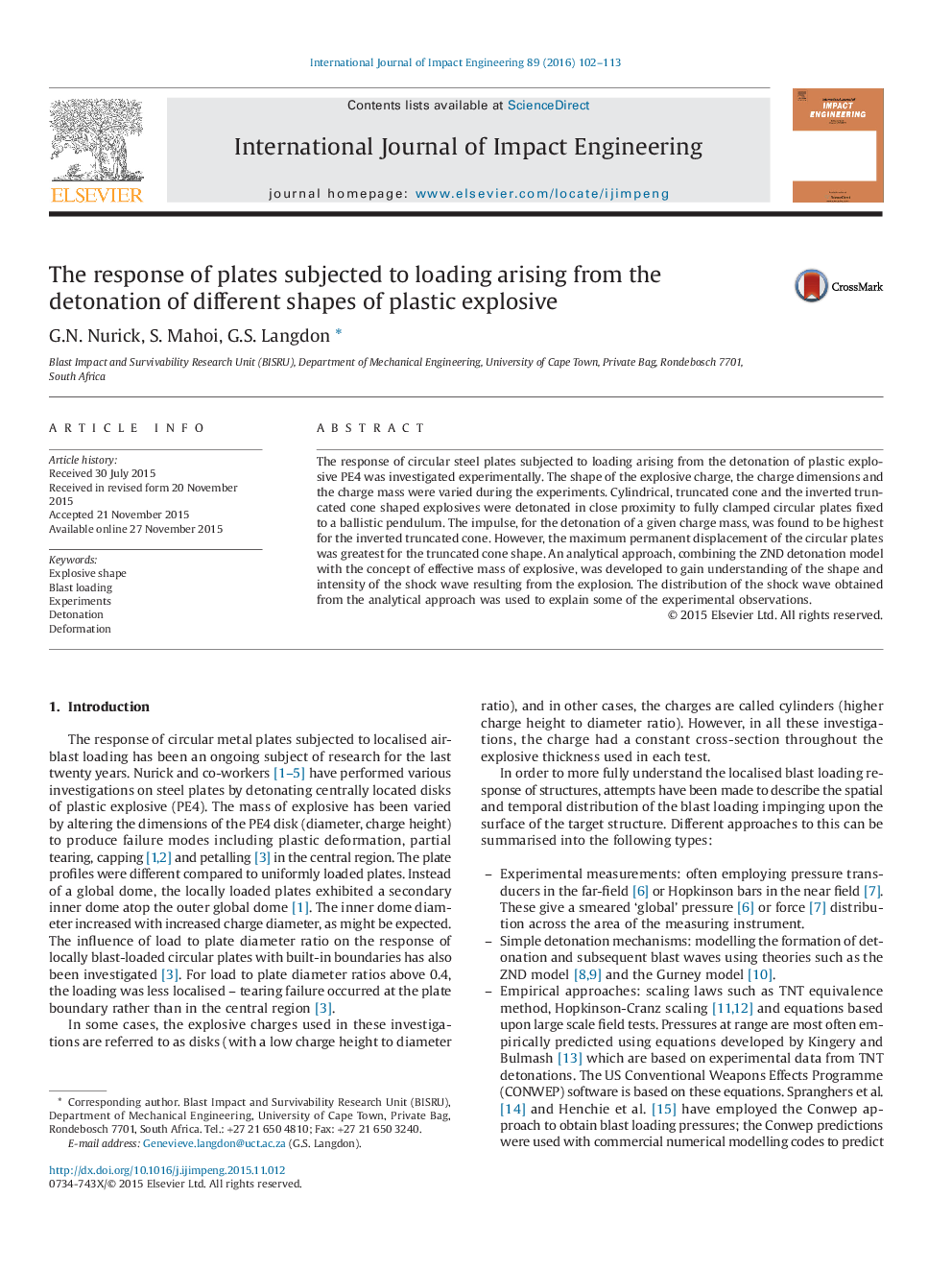| Article ID | Journal | Published Year | Pages | File Type |
|---|---|---|---|---|
| 776369 | International Journal of Impact Engineering | 2016 | 12 Pages |
•Air blast experiments with different charge mass geometries.•Steel plates subjected to PE4 detonations.•ZND model and effective charge mass model used to explain charge geometry influence.•Shock wave analytical approach predicts experimental features well.
The response of circular steel plates subjected to loading arising from the detonation of plastic explosive PE4 was investigated experimentally. The shape of the explosive charge, the charge dimensions and the charge mass were varied during the experiments. Cylindrical, truncated cone and the inverted truncated cone shaped explosives were detonated in close proximity to fully clamped circular plates fixed to a ballistic pendulum. The impulse, for the detonation of a given charge mass, was found to be highest for the inverted truncated cone. However, the maximum permanent displacement of the circular plates was greatest for the truncated cone shape. An analytical approach, combining the ZND detonation model with the concept of effective mass of explosive, was developed to gain understanding of the shape and intensity of the shock wave resulting from the explosion. The distribution of the shock wave obtained from the analytical approach was used to explain some of the experimental observations.
